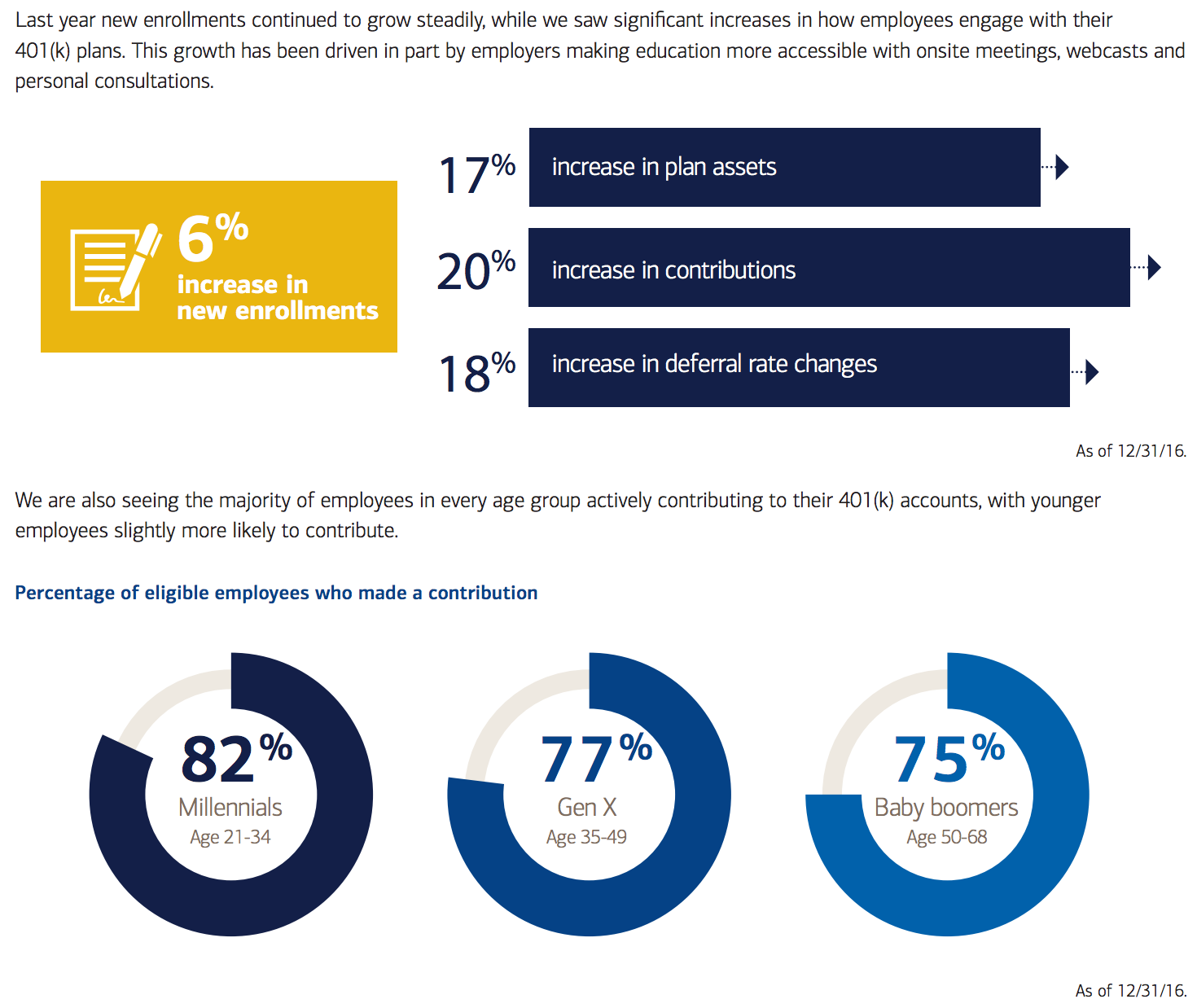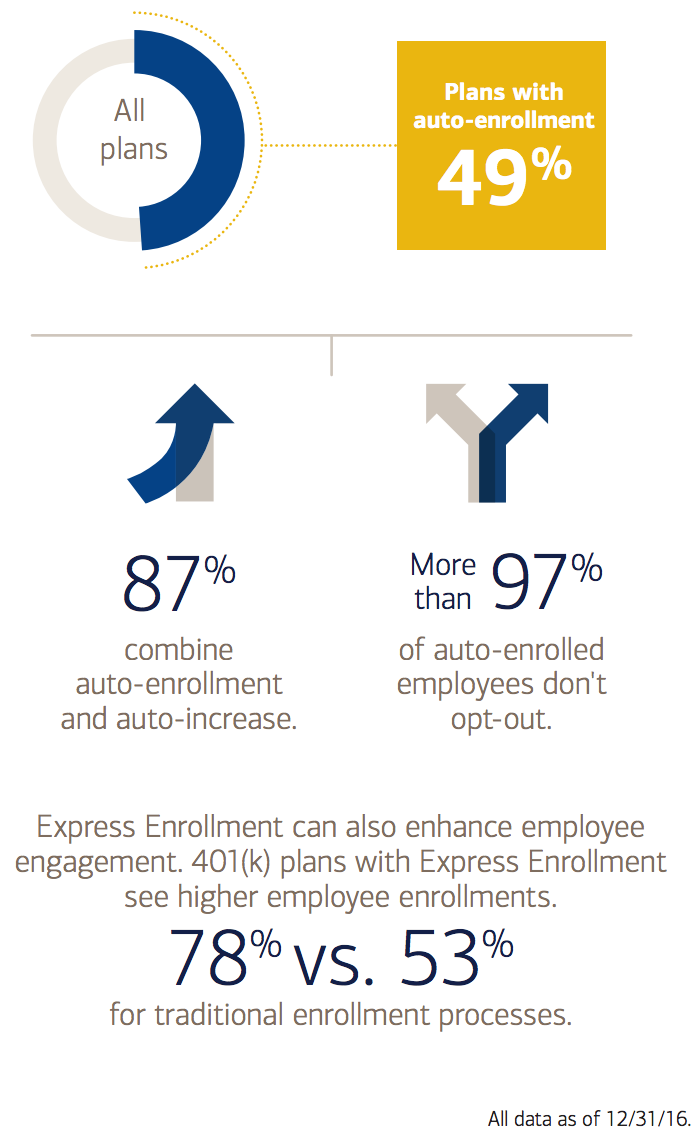According to Bank of America’s 2016 Plan Wellness Scorecard, millennials lead the pack when it comes to contributing to their 401(k) plans. Specifically, about 82% of millennials contributed in 2016, compared to 77% of Gen Xers and 75% of baby boomers.
This statistic may seem counterintuitive, as millennials are most likely to be under financial pressures from credit (student loans, car payments, mortgages, etc.) as well as receiving lower pay. They are also the furthest away from retirement compared to the other two generations. What’s motivating Millennials to save and invest?
According to Sylvie Feist, Director of Financial Guidance Services at Bank of America Merrill Lynch, one of the biggest reason stems from millennials’ digital savviness. Most of them find it easier to sign up online for the plans, as opposed to older generations who might be less savvy or more skeptical of technologies. Millennials also know better than to turn down an employee benefit. According to Feist, “millennials are very interested in saving and very interested in the education that we are delivering and what their employer is offering to them as benefits.”
As millennials save, other employee groups are also taking an active role preparing for retirement. The report found that participation in 401(k) plans grew slightly over last year. Additionally, employee account balances, contributions, and deferral rates all saw an increases of nearly 20% since 2016. It is important to note that this growth reflects the overall growth of the stock market.

 This development did not come as a surprise, as employers have been diligently helping employees saving more by using simplified plan features, such as Express Enrollment, auto-enrollment, and auto-increases. In fact, the number of plans adopting these features have increased by 153% since 2016. Auto-increases, specifically, have “become very popular, showing a 24% year-over-year adoption growth rate and an astonishing 172% increase since 2012.”
This development did not come as a surprise, as employers have been diligently helping employees saving more by using simplified plan features, such as Express Enrollment, auto-enrollment, and auto-increases. In fact, the number of plans adopting these features have increased by 153% since 2016. Auto-increases, specifically, have “become very popular, showing a 24% year-over-year adoption growth rate and an astonishing 172% increase since 2012.”
Lessons For Wellness Programs
Getting the group furthest away from retirement to become most diligent savers is no easy feat, and wellness coordinators can use the same tactics to attract more millennials to take advantage of their wellness programs.
1. Digitize Offerings
For a group who asks Siri about their daily schedules, a pen-and-paper wellness program won’t do (also, these programs are more expensive than one would think). Incorporating wearable devices and wellness apps into employee health programs offers millennials a novel and exciting experience as well as a much more enticing experience than other traditional tech-dinosaur programs.
The digitization of wellness programs goes beyond devices and apps, as innovative employee health coaching programs are now adopting consumer wellness technologies into their services. The benefit for these programs is two-fold: employees get interactions with digital health coaches outside of appointments and the employer gets more out of their investment. (Learn more about this new model by checking out the free ebook Employee Health Coaching 101. It includes everything you need to know to plan a cost-effective health coaching program.)
2. Simplify And Automate When Possible
Making it easy and convenient for employees to participate in wellness programs is never a bad idea. For example, a great step challenge is one where people can participate without having to sign into an app daily or submit their log to the system. Eliminating extra steps will increase participation, as there are less moving parts and room for error. Similarly, automation allows employees to focus solely on making healthy habits and not getting frustrated over numbers.
Another example of simplification is the application of geo-tagging technology in wellness programs. For participants who are frequent gym-goers or prefer to take fitness classes, geo-tagging allows them to easily “check-in” to the location and receive credit for their workouts instead of having to manually enter the location and other related details. Small details like these make all the difference when it comes to making healthy habits stick versus a short-lived burst of motivation.












